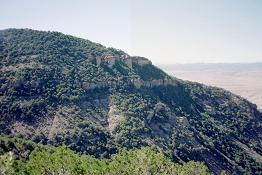
near the route to summit of Mystery Peak.
|
New Mexico November 2005 Trip Report © November 2005 Adam Helman |
| (Photographs courtesy of John Hamann and Richard Carey. Click on any image for enlargement.) |

|
|
Limestone cliffs from 7,000 to 7,500 feet near the route to summit of Mystery Peak. |
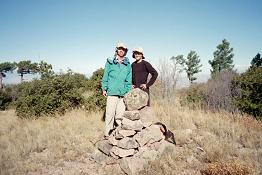
|
|
Richard (photo left) and Adam atop Mystery Peak. |
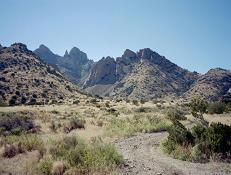
|
|
Entrance canyon for the Florida Peak climb. |
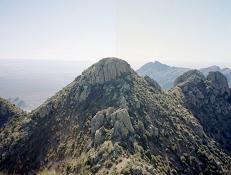
|
|
View from the twin-butte northern peak back to the tamer, southern Florida Peak. |
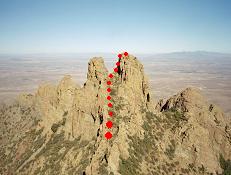
|
|
View from the Florida Peak's easier summit to the twin buttes of the north summit. Red indicates the preferred route of ascent. |
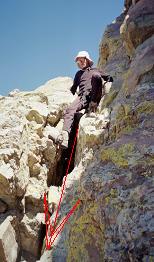
|
|
Adam downclimbing the short crux of Florida Peak. |

|
|
Edward downclimbs the short, Class 4 crux of Florida Peak while Adam looks upward. |
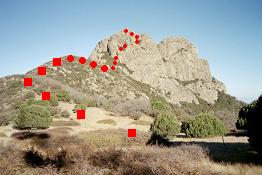
|
|
The south (near) and north summits of Dos Cabezas Peaks. Red indicates the preferred route of ascent. |
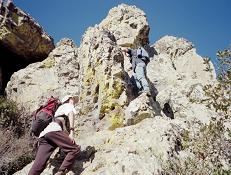
|
|
Edward (high) and Adam (low) just above the chockstone on Dos Cabezas Peaks. |
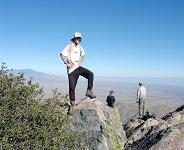
|
|
Adam atop the highest boulder on Dos Cabezas Peaks. |